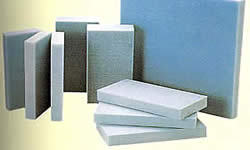I. Overview The global economy is booming. Demand for consumer goods is strong. The sales of communication equipment and automobiles have soared. The supply of plastic raw materials has become very scarce. In 2004, the skyrocketing prices of plastic raw materials around the world made the industry realize that an unattractive market - the market for used recycled plastics - was promising. As the price of new plastics rose too fast, the demand for recycled plastics also soared, and prices soared. Taking the domestic market as an example, waste plastics are far from satisfying the market and still require large amounts of imports. It is estimated that in 2004, China imported about 4 million tons of recycled plastics. The price of waste plastic that year rose from 2000 to 3,500 yuan/ton to 4000 to 8,000 yuan/ton, an increase of more than 50%, which is almost equivalent to the new material price at the beginning of the year. In China, quality requirements for many plastic products are not high, so some processing companies will use recycled materials whenever possible. People in the industry realized that the plastic recycling industry also has a lot of room for development. It is an industry worth paying attention and investment. Daily recycled plastic products include: construction materials (such as steel, sheds and wall panels), horticultural materials (such as flower pots, garden piles), and agricultural product containers (such as containers of preserved eggs, fruits, and vegetables). ), office supplies (such as binders and covers), non-food containers and reusable containers, recreational facilities and outdoor furniture and other plastic products. Figure 1: Common recycled plastic products In recent years, there have been special technologies for the production of fuel oil from waste plastics. Because plastics are polymer compounds formed by the polymerization of C and H elements in crude oil, that is, the macromolecular compounds formed by the polymerization of C and H elements are the main components of plastics. It is entirely feasible that the new process melts and decomposes the plastic into oil. The current research focuses on how to achieve cost-effectiveness. Second, the recovery costs are relatively low Industry insiders estimate that in 2005, the continued growth in the use of waste plastics has reached another peak. Due to the disposal of waste plastics, the general processing technology content and equipment requirements are relatively low, the source is in abundance, the production cost is not high, and the profit is still considerable under the current price level. However, it is very difficult for large enterprises to adopt a large-scale monopoly approach, which is very beneficial to the growth and development of small businesses. According to incomplete domestic statistics, the recycling rate of plastic products in China is less than 10%. In other words, the actual recovery rate is less than 1%. From the digital point of view, there is a huge domestic waste plastics market and development space is self-evident. In other words, the recycling of used plastics is a work that benefits the country and the people. The coordinated development of the plastics processing industry and environmental protection is an important issue for the sustainable development of the plastics processing industry. It is reported that the leaders in charge of national economic development are embarking on planning, organizing inter-departmental joint drafting of preferential policies, special laws and regulations, determining the management responsibility system, and establishing a market system for business order, to guide the supervision of the healthy development of the recycling industry. The division of labor among them is that the National Development and Reform Commission is studying and formulating a number of special laws and regulations that support the recycling of resources. Zhang Xixi rushes to steal the waste and recycles waste materials. It is also evaluating the first batch of national Circular economy pilot work, and actively promote the implementation of the second batch of national pilot, the use of national debt to support renewable resources projects. The Ministry of Commerce will also determine the responsibility for the unified management of the division of labor, organize the establishment of renewable operators qualification system and market access system; improve tax policies, reduce the burden on recycling companies; reasonable distribution of recycling outlets; establish recycling industry statistics system, master the industry situation, A variety of measures are adopted to maintain the order of operations of the waste materials recycling industry such as waste plastics. The State Administration of Quality Supervision and its relevant departments are also in accordance with the “2005-2007 Resource Conservation and Comprehensive Utilization Standard Development Plan†to ensure that secondary pollution will not occur in the recycling, recycling, utilization, and import of plastics. The standard system mainly includes comprehensive basic and management standards for the recovery and reuse of waste products and wastes, recycling methods, processes and equipment standards, dismantling and recycling methods, processes and equipment standards, and basic standards and management of the circulation of used goods. With technical standards and so on. Although the waste plastic recycling and recycled plastics industry has great economic value, it also brings about some problems in health care and environmental maintenance during the process of processing or importing waste plastics. In early 2004, a case of waste plastic that violated the Basel Convention and China's environmental protection control standards occurred in Shandong. To this end, the AQSIQ issued an announcement No. 47 of 2004, suspending the processing of waste plastics imports and related inspection and quarantine procedures in the countries involved. After many mediations, the waste plastics manufacturer involved in the case pledged to take improvement measures before the incident was resolved. Engaging in the recycling of waste plastics will have a negative impact, the most common being causing water pollution and causing damage to the sanitary environment. The recycled plastics industry causes water pollution, mainly in the crushing and washing process, and the various substances attached to the waste plastics are mixed in water. Different kinds and sources of waste plastics cause different levels of pollution, mainly in the following categories: Pollution of waste plastics 1. Color pollution: Contact or packaging of dyes, pigments, etc. with waste plastics 2. PH value pollution: Waste plastics contacted or packaged with strong acid and alkaline substances 3. Microbial contamination: waste plastic comes from disposable medical equipment 4. Toxic Substance Pollution: Waste Plastics Contacted or Packaged Poisonous and Harmful Substances 5. Grease contamination: plastic materials contacted or packaged with waste plastics 6. Solubility contamination: contact or packaging of waste plastics with sodium chloride, soda ash, etc. 7. Suspended matter contamination: contact or packaging of waste plastics with cotton yarn, chemical fiber, quartz sand, cement, calcium carbonate, etc. 8. Organic pollution: Waste plastics contacted or packaged food, feed, beverages, etc. Of the eight major pollution categories mentioned above, 1-4 types of waste plastics generally contain toxic and hazardous substances. Therefore, it is recommended that small-scale enterprises not to purchase or process such waste plastics because such waste plastics need to be equipped with perfect water treatment facilities and labor protection for workers. Injury to the human body after contact! In order to facilitate the recycling of waste plastics, enterprise product designers in various advanced countries have consciously avoided the use of multiple plastics. Fourth, the processing is not difficult The more common waste recycling technologies can be classified into mechanical recycling, chemical recycling and recycling of raw materials. 1. Mechanical recovery method The discarded material is directly reclaimed and made into plastic pellets, and the reconstituted pellets are then returned to the plastic manufacturing process for the production of new products. The first is to collect discarded plastic waste from various sources. Including soda bottles, detergent bottles and other household wastes, they are sent together to the material recycling center where they are separated by mechanical or manual means. The mixed plastic wastes are then separated, packaged and sent to the center. Plastic recycling factory. After the remanufacturer receives the designated plastic bale, it will send the materials to the shredder and disperse it, and then send it to the special shaker. Small trash and dust can fall through the screen and fall into the trash pocket. This is the first step to remove impurities. After that, the recyclable plastic that is screened out will enter the grinding and cleaning process. Afterwards, the material is cut into small pieces to make the labels and other attachments fall off. After shredding, add water to soften the debris and remove impurities, then send the debris to the washing machine. Some washers use warm water and detergents; others use room temperature water, heating the water using mechanical movements during the cleaning process. This cleaning process removes residues, dust particles, and labels. Then use a flotation cylinder to separate the different densities of plastic and impurities. Dust particles and denser plastics (such as PET) sink to the bottom of the tank and are later removed. The decontaminated cleaning debris is first blown with hot air, and then the air separator classifies the film and labels. After the plastic pieces enter the sorter, an air stream is blown down, lighter pieces of film are blown away, and heavier pieces of plastic continue to sink. Finally, the plastic fragments are melted, filtered, and pelletized by extrusion. At the beginning, the plastic chips are poured into large pockets to reduce the difference in quality. Afterwards, the chips are fed into the extruder. Inside the machine is a heated cylinder with a screw conveyor inside. The chips are melted in the extruder and flow through the filter at the end of the machine. The particles of non-melting impurities cannot pass through the mesh, and the pure melt is squeezed through the plate drilled with small holes to become noodle shape. During the cooling of these plastic strips, they can be quickly cut and pelletized. It is reported that Austria has launched a machine that automatically filters waste plastic bottles. It can identify eight materials including PET, PVC, PE, PP, PS, PA and ABS. Regardless of whether the plastic bottle is labeled, or whether the plastic bottle has been deformed, it can sort and recycle plastic bottles at a rate of 5 to 7 per second. This product simplifies the picking process. 2, chemical recycling It refers to the removal of polycondensation or addition polymerization by a depolymerization method to change the polymer back to monomer. Plastics that can be reconstructed in this way include polyesters (such as PET bottles for soda bottles), polyamides (such as nylon for carpets), and polyurethanes (such as foams for car seats). For long-chain polymers, the chain can be broken chemically and thermally. If the purpose of the depolymerization is to restore the original chemical composition of the polymer, this process is called raw material manufacturing or monomer manufacturing. PET and certain polyamides and polyurethanes can be depolymerized very effectively and the resulting synthetic chemicals can be used to make new plastics, without any difference from the original polymer. 3, recycling of raw materials Although this process includes chemical recycling, the narrow interpretation means that the polyolefin and polyalkene-like polyolefins are depolymerized with heat to make them into various smaller olefin intermediates. There is not much difference between these intermediates and gasoline or lubricating oil. In some cases, heat can be used to depolymerize the addition polymer and change back directly to the monomer. The recovery rate of this process is quite high, such as changing polystyrene back to styrene and changing polymethyl methacrylate to methyl methacrylate. The depolymerization process for recovering the monomer feed must be very effective. In other words, there should be a very high monomer recovery rate and a small amount of waste in order to be able to obtain greater economic benefits. Some plastics are particularly suitable for thermal depolymerization because of their unique chemical properties. Reprinted from: Plastics Industry Network
Outdoor Wicker Daybed is modern stylish choice for
resort and hotel projects.The contemporary
design is combined with all-weather PE wicker,study aluminum frame and UV
protected fabric cushion.
Outdoor Wicker
Daybed is classic among patio furniture. They are easy in
maintenance and look naturally, plus they are ideal for the terrace,patio and
poolside. Wicker furniture is available in many different versions – sectional
outdoor sofas, sofas, sets or chairs. The full offer is available on our
website. Since the demand for furniture has grown in recent years, the wider
offer has been created. We are convinced that our broad and attractive
assortment will suit any tastes.
·
Perfect for simply relaxing in your holiday with family and
friends
·
Waterproof and UV-resistant wicker rattan
·
Removable thick cushions
·
Waterproof fabric is engineered to endure the weather and
resist fading, mildew, and stains to extend the life of your cushion
·
Powder-coated aluminum/synthetic wicker/polyester
·
Do not use any abrasive cleaning agents for cleaning
·
Clean the chaise lounge with a damp, soft cloth (you may use a
mild cleaning agent) and wipe it dry afterwards
·
In case of ceaseless heavy rain or during the winter, the
furniture should be stored inside or have a protective cover on it
If
you have any questions, please contact with us directly. Outdoor Sofa Furniture
are produced
by
Golden Eagle Outdoor Furniture With High Quality and Good Appearance. Welcome
you can visit our Factory.For any inquiry,Please send mail directly to us.

In recent years, the rapid development of China's plastics industry has become an important pillar of the national economy. Due to the serious shortage of raw material resources in China, people are almost spontaneously using renewable resources to the extreme, and in the establishment of renewable and economic development During the model process, the important value of plastic recycling is also being highly valued by the national authorities. Understanding the use of renewable resources is of great significance to ease the shortage of domestic resources and energy.
Classes 5 to 8 waste plastics do not contain toxic or harmful substances and can be discharged after simple treatment. Therefore, they are more suitable for processing in small enterprises.
Features
Maintenance tips




Wicker Furniture,Wicker Daybed,Wicker Sofa Set,Outdoor Wicker Furniture,Wicker Patio Furniture,Wicker Rattan Furniture
Golden Eagle Outdoor Furniture Co., LTD. , https://www.gerattan.com